Learning the Art of Streamkeeping
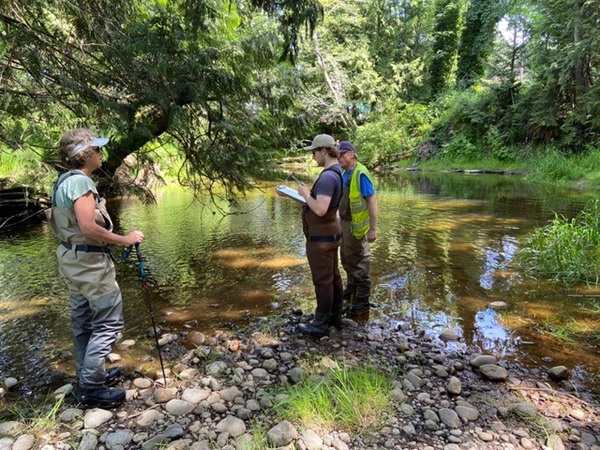 One gorgeous weekend in June, seventeen volunteers gathered at French Creek to learn how to assess fish habitat and stream health through a Streamkeeper Course. The course is available from the Pacific Streamkeepers Federation who provide support and education to groups like MVIHES.
One gorgeous weekend in June, seventeen volunteers gathered at French Creek to learn how to assess fish habitat and stream health through a Streamkeeper Course. The course is available from the Pacific Streamkeepers Federation who provide support and education to groups like MVIHES.
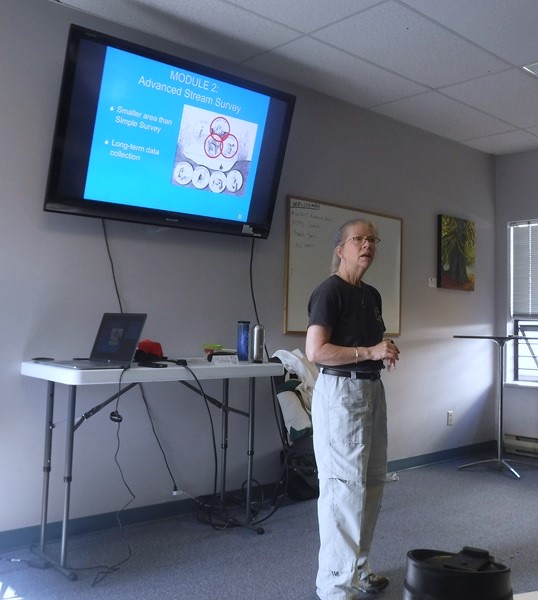
Led by our awesome instructor Michele Jones of Mimulus Biological Consultants, we spent a few hours each day in a classroom at the Parksville Community Centre on Mills St. Then we put what we learned into practice in French Creek.
This included taking measurements of water depths, creek widths, oxygen levels, numbers and lengths of pools and riffles. We even measured the amount of gravel and rocks on the creek bottom (left-hand photo below). We collected insects from the creek bottom using a net (right-hand photo below) and took them back to the classroom to identify.
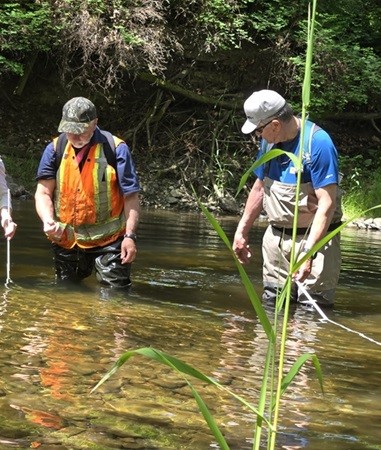
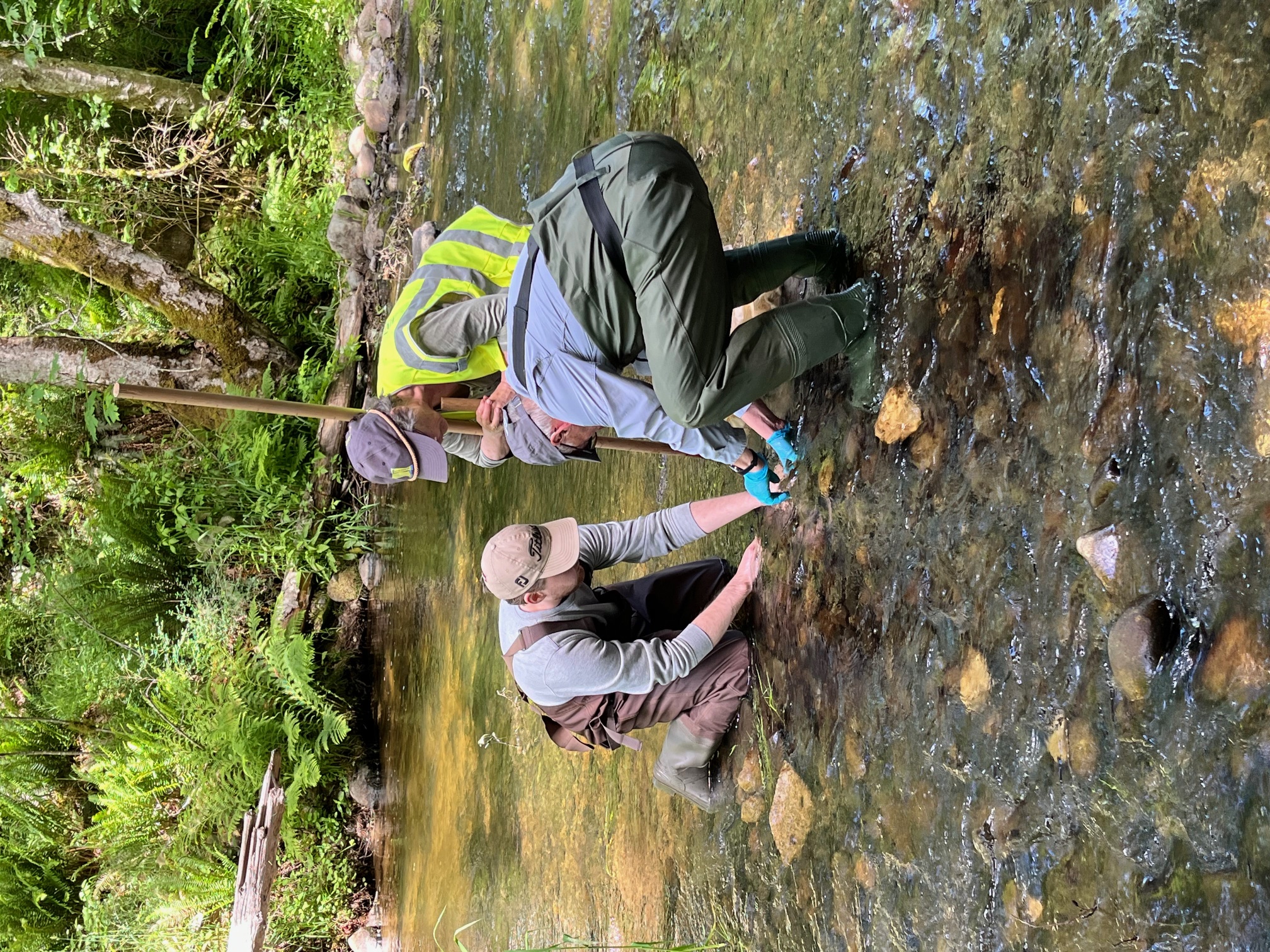
Did you know you can assess the health of a stream by the species of insects living on the bottom? We did this in 2019 on the Englishman River and its tributaries. You can read about it here.
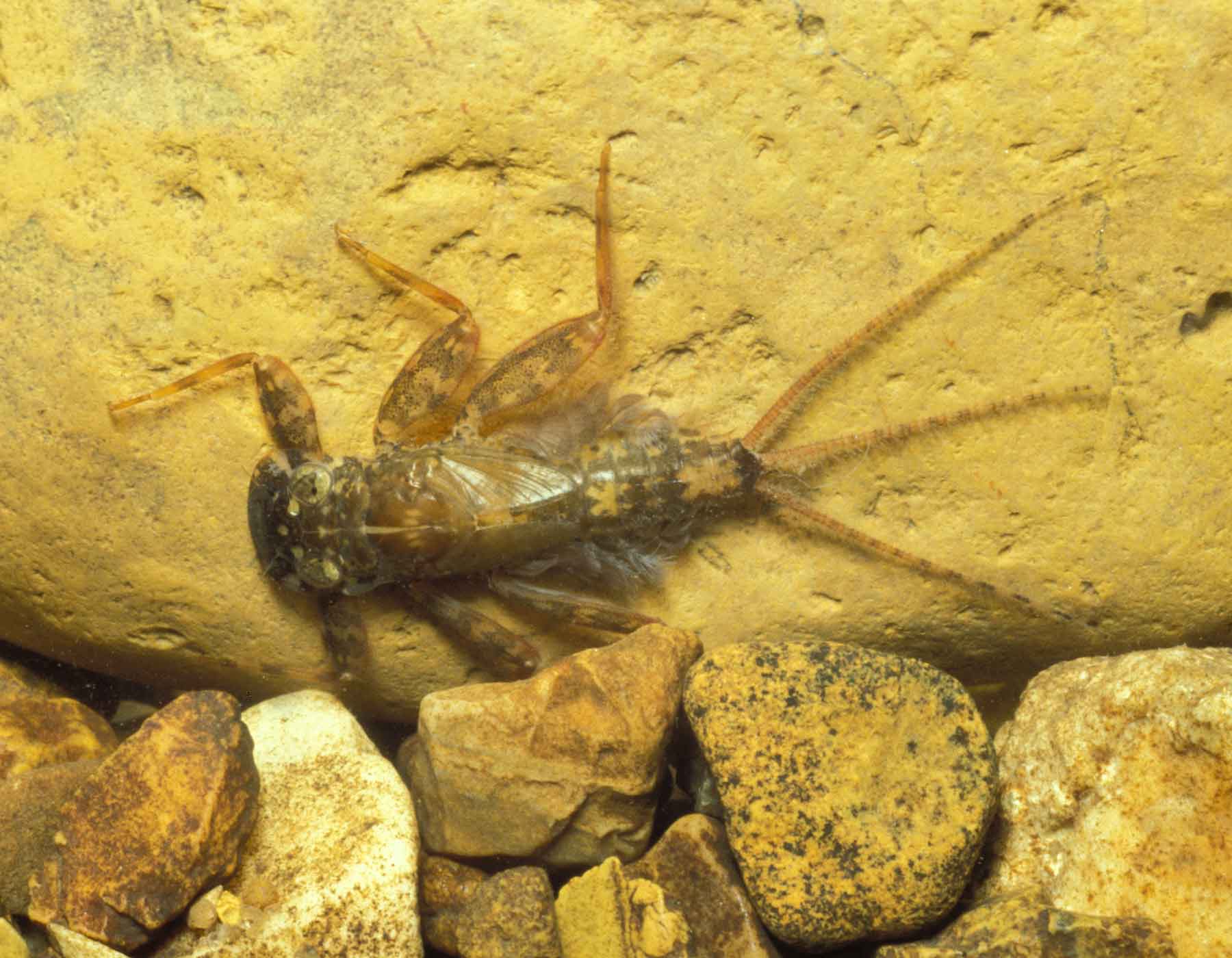
It seems we arrived at French Creek just in time for a hatch of May Flies. Scores of teeny tiny newborn May Fly nymphs (left-hand photo magnified a billion times) were in our samples among other critters like Stone Fly and Caddis Fly nymphs, water mites, and midge and Water Snipe larvae. Some of us older visually challenged folks relied on the experienced eyes of Michele Jones to identify those annoying tiny May Fly nymphs (they did that on purpose!).
Other important features of a creek are the amount of vegetation on the creek banks for stabilizing the banks and the amount of shade provided by trees. Tree roots and logs that hang over or into the water are important for providing cover for young fish from predators as well as shade. We recorded creek measurements and information on field data sheets.
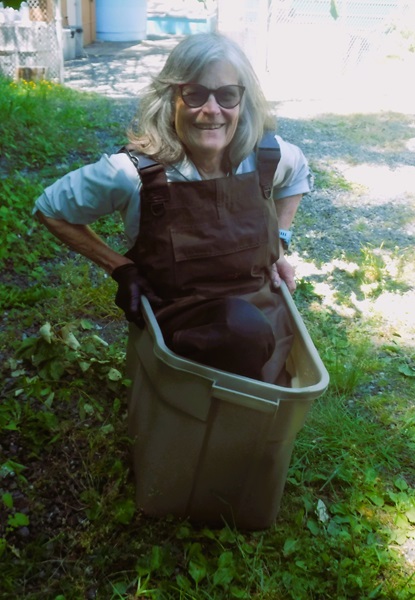
Before we returned to the classroom on the final day we made sure to rinse off our boots/chestwaders and equipment in a 10 percent bleach solution. This is important for preventing the spread of diseases like didymo, commonly known as rock snot, and whirling disease. Volunteer Gene Gapsis (right-hand photo) took this task most seriously.

We brought our field data sheets back to the classroom and copied the information onto assessment sheets that give a score for the various creek features Overall, the small section of French Creek we assessed has Acceptable fish habitat.
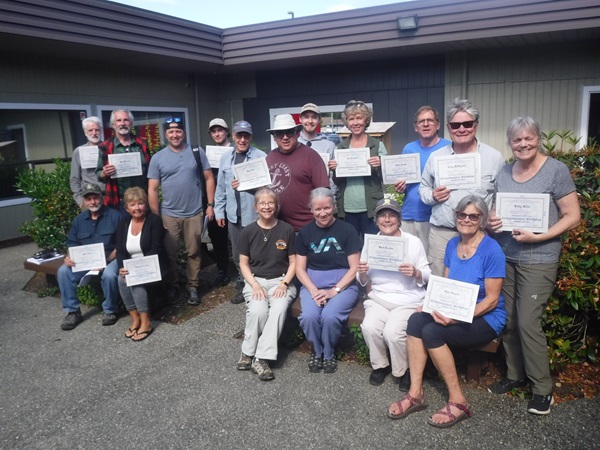
And then we graduated from Streamkeeper School. Starting at the back, from to left to right, are Glen Stedham, Bob Williams, Chris Alexander, Matthew Stoltz, Ed Wasiak, Paul Sim, Logan Pike, Liz Campbell, Chris Smith, Craig McFadyen, Kathy Miller. In the front from left to right are Mark Hogg, Darlene Norring, Michele Jones, Kelly, Barb Riordan, Gene Gapsis. Missing in action: David Belitsky
Thanks for being such great students and instructor. Thanks also to the Qualicum Beach Streamkeepers who contributed funds to the course and the Parksville Qualicum Fish and Game Association for giving us access to bathroom facilities at the Marion Baker Fish Hatchery.
This course was made possible by a grant from the Pacific Salmon Foundation
